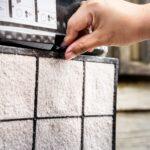Upgrading your air conditioner probably doesn’t have the same appeal as upgrading your house, your car, or even your hotel room. But if your A/C isn’t keeping up with soaring temperatures, the daily discomfort you feel is certainly not appealing either. So if you’re struggling to cool your home in the warm months, you may be wondering when to replace your air conditioner rather than just repair it or live with it.
The answer to the “replace or repair” question for air conditioners depends on a number of factors, which we’ll cover in this post:
- The age of your current air conditioner
- The age of your furnace
- The type of air conditioning issue you’re having
- The installation techniques used by the HVAC companies you’re considering
Our goal is to help you evaluate your air conditioner’s performance, estimate its longevity, and understand key details about quality A/C replacements. This will help you make a decision about when to replace your own.
Let’s get going!
How Old is Your Air Conditioner?
In determining when to replace your air conditioner, one of your first considerations, not surprisingly, is its age.
The U.S. Department of Energy estimates that the average lifespan of a modern central air conditioning system is 15-20 years. Other experts say it’s a bit lower: 12-17 years with regular maintenance and below-average runtime.
As a general rule, if your air conditioner is underperforming and approaching the middle of its life – about 8-10 years (give or take, depending on factors that we’ll discuss in a bit) – it’s time to consider replacing rather than repairing it. This is because a middle-aged air conditioner is likely entering a cycle of continual repairs. Multiple A/C repairs usually cost more than a new system does.
Plus, the efficiency of A/C systems is always improving. Replacing an aging air conditioner with a newer model can pay for itself in lower energy bills. In fact, they can be up to 20%-40% lower.
Keep in mind that the 8-10-year rule is indeed just a general one. The longevity of your own air conditioner depends on its age plus several other variables. These variables can either prolong or reduce the lifespan of your A/C, however many years you’ve had it.
So in deciding when to replace your air conditioner, here are some things to consider alongside its age:
The Warranty
If your air conditioner’s warranty is still in effect and the manufacturer will cover repairs, then you’re probably not at the A/C replacement stage quite yet – a repair should be your first step. If your warranty has expired, repairs may be more costly to you than they’re worth. In this case, a full-on A/C replacement may make more financial sense.
Maintenance History
Regular cleaning and yearly tune-ups boost the longevity of any air conditioner. In fact, many A/C warranties remain valid only with routine maintenance. Neglect will shorten the life of even the most high-end air conditioner. (If you’d like to learn more about A/C maintenance and how we can help, check out our post on the topic.)
So whatever the age of your air conditioner, if it’s clean, with up-to-date, well-running parts, a repair might be a good investment for you. But if your A/C is buried in years of grime or needs multiple updates, a replacement might be in order.
Your Climate
Local weather affects air conditioner performance. Here in western Pennsylvania, we have a seasonal climate that allows A/C systems to rest for part of the year. This increases their lifespan. Warmer climates put more year-round demand on A/C systems. This, as you might imagine, decreases their lifespan.
So if you get to turn off your air conditioning for months at a time – as we do here in the South Hills of Pittsburgh – you can probably wait longer to replace it. But sometimes winter weather or storms can damage outdoor A/C components, such as the compressor or condenser coil. These components are expensive. So if this happens to yours, you might want to replace your whole A/C system.
Airflow Design
In order to run smoothly, your central air system, including all equipment, ducts, and connections, must circulate the proper amount of air through your home at the proper rate. Any airflow restrictions or inefficiencies add stress to your air conditioner. And stress wears it out more quickly.
If your A/C has been compromised by faulty airflow, you should consider upgrading your system with a new installation that’s tailored for your home specifically.
Outdoor Elements
Heightened levels of pollution, corrosion, debris, and flooding can damage your outdoor A/C unit and speed up your replacement timeline.
So if you live in an area with heavy construction, dense foliage, high traffic, acid rain, or natural disasters, you can expect your A/C to need repairing from time to time. If repairs become too frequent, that’s when to replace your air conditioner with an upgrade designed to better handle the geographic burden you’re facing.
Type of A/C Equipment
There are several excellent A/C brands whose products consistently outlast the commonly accepted averages. For example, Lennox is exceptional in this regard.
However, homes built within the last 10-20 years usually have entry-level A/C units. This is because homeowners often allocate construction upgrades to things they see every day, like kitchen appliances and countertops, rather than things they don’t, like heating and cooling.
Entry-level A/C units are perfectly safe and serviceable, but their lifespan is about 10-15 years. They tend to fail at around the 13-year mark on average. Many fail much earlier, particularly lesser-maintained ones. Some entry-level units last up to 20 years, but this is the exception rather than the rule.
So if you’re a homeowner with entry-level A/C, you may find that the cost of repairs is too high relative to the value of the equipment itself. When entry-level A/C starts to break down, consider proceeding straight to replacement.
How Old is Your Furnace?
We’re discussing when to replace your air conditioner, but asking about your furnace. What gives?
Well, in a central air system, the heating and cooling are integrated. They share the infrastructure that directs both warm and cool air throughout your home.
Among the most critical components of this infrastructure are the furnace fan and its motor. The furnace fan, which is located in your furnace unit, moves the cool air that your air conditioner generates.
A modern furnace fan is critical in delivering the increased efficiency that modern air conditioning promises.
Here’s why: new furnace fans use electronically commutated motors (ECMs), which feature automated variable speeds. This variability enables the fans to balance temperature precisely, raising or lowering it according to demand. ECM-powered fans also use minimal energy – around 200 or fewer watts.
In contrast, older furnace fans use permanent split capacitor (PSC) motors. PSC-powered fans have only one speed, which is full tilt, and only one other mode, which is “off.” They’re also wattage guzzlers, requiring 550-700 watts to run. By design, these fans cannot promote efficiency.
This brings us to why we are asking about your furnace. If you replace your air conditioner but keep an older furnace with a PSC-powered fan, you’ll get blasts of cool air followed by lulls of no air.
Basically, you will miss out on the temperature regulation and energy efficiency that modern air conditioning provides. That means no responsive cooling and little to no decrease in your utility bills.
So in deciding when to replace your air conditioner, you should also be ready to replace your furnace, if necessary.
What Air Conditioning Issue are You Having?
If you are wondering when to replace your air conditioner, you may be noticing one or more of the following symptoms of an A/C problem:
- Your A/C is running but not cooling your home well.
- Your A/C is cycling on and off rapidly.
- Warm air rather than cool air is coming from the vents.
- Your home is unevenly cooled, with some areas too warm and others too cold.
- Excessive humidity pervades your home.
- Ice or water is present near or around your A/C unit, its coils, or your furnace.
- Your A/C is producing unusual sounds or smells.
All of these symptoms warrant attention from an HVAC professional, who can diagnose the specific problem. Many times, your HVAC pro can also provide the service or repair to fix the problem without a lot of fuss or expense. This is the often the case when the problem is any of the following:
- A clogged filter
- A mild to moderate clog in the evaporator or condenser coil
- Worn electrical components
- Dirt buildup on any indoor or outdoor equipment
Note that sometimes the A/C symptoms you’re noticing aren’t necessarily problems with your air conditioner itself, but with the air quality in your home. If this is the case, you may be able to address the problem by adding a product, such as a dehumidifier or energy recovery ventilator (ERV), to your system. (We discussed home air quality in another post – check it out to learn more.)
Other times, though, the only viable solution to the A/C problem you’re having is a full-on replacement. Following are some of the most common scenarios where it makes more sense to replace your air conditioner than either repair it or augment it with additional products:
Your Evaporator or Condenser Coils are Leaking Refrigerant
Evaporator and condenser coils are made of metals like copper, steel, and aluminum. These are strong yet flexible materials that conduct heat well. A leak in either type of coil is usually not spontaneous but rather caused by years of corrosion or vibration.
What this often means is, today’s damaged coils are leaking yesteryear’s refrigerant, which is R-22. More commonly known as freon, R-22 is toxic to the environment. Manufacturers began phasing it out in 2010 in response to mandates from the Environmental Protection Agency. As of 2020, it’s actually illegal to produce R-22 in the U.S.
Thus, a refrigerant leak from your evaporator or condenser coils requires replacing the coils. Plus, it usually requires upgrading your refrigerant to the safer and more environmentally-friendly R-410. These are major overhauls that call for a new air conditioner altogether.
Your Air Conditioner is Not Sized Properly for Your Home
When it comes to air conditioner size, small does not mean “less” cooling and large does not mean “more” cooling. Ideal cooling isn’t about power but fit. The capacity of your air conditioner must be fitted to the size of your home in order to run efficiently and cool your home properly.
When your air conditioner is too small or too big for your home, a few things happen:
- Your air conditioner runs too hard, with cycles that are too short or too long, and wears out more quickly.
- Indoor humidity remains a problem for you since inefficient cooling cycles can’t regulate it.
- Your energy bills are higher than they should be, thanks to the extra work your air conditioner is doing to compensate for its poor fit.
- Your home has uneven cooling, with hot spots and cool spots rather than consistent temperatures throughout its footprint.
An improperly sized air conditioner is not something you can resolve with repairs. Your A/C will continue to struggle, and create the above issues, until it’s replaced.
The Problematic Materials are Too Expensive
Sometimes the decision about when to replace your air conditioner doesn’t depend on the nature of the repair, but on the cost of the parts or equipment.
These costs fluctuate according to economic forces. So in some years or seasons, you may be able to solve your A/C problem inexpensively and fairly quickly with a repair. In other years or seasons, the same repair is too costly or requires too much shipping time, and a replacement is the better move.
For example, the current costs of many HVAC materials, including wire, piping, fittings, and flues, have increased drastically. The costs of copper and plastic in particular have skyrocketed. Thus, when A/C components that contain these materials break down, the cost to repair or replace them is approaching the cost of replacing the entire A/C system. In these cases, you are better off with the new system than an excessively pricey repair.
How Will Your New Air Conditioner be Installed?
If you’re deciding when to replace your air conditioner, you want to determine how it will be replaced before you proceed. The A/C replacement methods that an HVAC company uses are actually more important than the brand of air conditioner that you choose. You can buy the best equipment available, but if it’s poorly installed, it will fail you.
So here are your steps for finding an HVAC company that will perform a top-notch air conditioning replacement:
Get Three Estimates
However you choose potential HVAC companies – through recommendations from friends and neighbors, by customer reviews, according to distance from your home, or some other criteria – schedule an estimate with three of them.
Three estimates enable you to gather enough information for a meaningful comparison across companies. And we recommend gathering several pieces of information, which we describe in the remainder of this section.
Ask About Replacement Techniques
Estimates are a critical opportunity to learn how HVAC companies approach replacements beyond the prices they charge and the brands they use – although those things are important.
Specifically, you want to ask each company the following questions and listen carefully to the answers:
- How will you perform the replacement of my air conditioner? What are your steps?
- What am I getting? What products and accessories are included?
- What related services will you be delivering? What infrastructure is affected and how will you address it?
Depending on how each HVAC company conducts its estimates, some of the answers to these questions will be documented for you. Others will be more informal, and you’ll get them in conversation with the company. Take note of which companies willingly provide answers and friendly explanations, and which don’t.
Verify Attention to Transitions
In many if not most air conditioning replacements, the new installation will connect to your existing ductwork. These connection points are called transitions.
Solid and secure transitions are essential for proper airflow throughout your home. And proper airflow is essential not only for your comfort but for the efficient and long-lasting performance of your air conditioner.
High-quality transitions are not merely joined. They are built.
Ideally, transitions are custom-built for your specific ductwork. This is because the shape, number, and position of connections from one home to the next, and from one HVAC system to the next, are never uniform.
An HVAC company with expertise and attention to detail in A/C replacements will measure your current ductwork, craft strong transitions for you in their shop using sheet metal and other durable materials, and fit it precisely to your ductwork (and to the new A/C equipment you’ve purchased) during your replacement project.
If an HVAC company proposes using only adhesives for transitions at the point of installation, you shouldn’t expect quality A/C replacement work from them.
Ensure Refrigerant Line Replacement
Central air conditioning systems have indoor and outdoor components. The evaporator is located inside your home, and the condenser is located outside. Connecting these components are two refrigerant lines. One carries refrigerant in gaseous form, and the other carries it in liquid form.
Made of insulated copper, the refrigerant lines are responsible for displacing heat from your home and transporting it outside. Any thorough A/C replacement project includes replacing these lines as well, for two reasons:
- To eliminate the risk of any contaminants or debris from your old A/C system entering the new A/C system.
- To equip your new A/C system with properly sized, fully insulated refrigerant lines.
Some HVAC companies propose simply flushing the existing refrigerant lines when replacing an A/C system. Sometimes flushing is necessary, such as when refrigerant lines are buried in walls or floors. But if it’s possible to access the refrigerant lines at all, the best practice is to replace them.
Confirm Brazing and Vacuum Testing Over Soldering
Homeowners rarely ask how the lines between their A/C system components will be connected, but the technique used here determines whether you get a superior A/C replacement job or an average (or inferior) one.
A common practice for joining HVAC lines of various metals – typically copper – is soldering them. But a quality HVAC company will braze rather than solder these lines. Brazing is similar to soldering but done at a higher temperature.
A brazed A/C installation is more durable and secure than a soldered one. This is because brazing does all of the following:
- Creates a stronger bond between joints, even those of different materials and thicknesses.
- More thoroughly bridges gaps between loose joints.
- Delivers cleaner, more corrosion-resistant joints.
Further, your HVAC company should ensure the integrity of your A/C installation by vacuum testing it. This is the process of keeping the copper lines completely clean as they’re brazed. Vacuum testing requires pushing nitrogen through the system to prevent oxidation in any lines or joints, and to ensure an entirely airtight and leak-proof A/C system. A quality HVAC company will be skilled and experienced with brazing and vacuum testing – and happy to describe their work to you.
_____________
We hope we’ve provided you with good guidance for when to replace your air conditioner, and how to have productive conversations with HVAC companies who might do the job for you. It’s a big decision, and we’re here to help!
If you’d like, you can learn more about our cooling services, or you can contact us any time. We’d love to answer your questions, and we can always come out and take a look at the A/C you’re thinking of replacing in the South Hills of Pittsburgh. We look forward to serving you!





